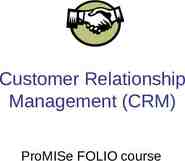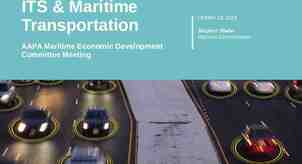Substance Abuse Prevention, Screening and Identification, and
32 Slides110.00 KB
Substance Abuse Prevention, Screening and Identification, and Assessment for Older Adults Frederic C. Blow, Ph.D. Associate Professor and Research Associate Professor University of Michigan, Department of Psychiatry Director, Serious Mental Illness Treatment Research & Evaluation Center Department of Veterans Affairs
Presentation Overview Prevention Issues Diagnostic Criteria Barriers to Identification Signs and Symptoms Psychosocial Manifestations Screening Instruments Special Assessments Future Research Directions
Prevention Issues
Lifetime Patterns of Substance Use and Abuse: Focus for Prevention Strategies Higher Older
Prevention of Substance Abuse Among Older Adults: Conceptual Issues Age group definitions Life course variations in consumption Sensible/appropriate use of alcohol and prescription drugs Diagnostic criteria for abuse/dependence Risk profiles for specific subpopulations Prevention goals
Prevention Strategies Effective with Youth: Relevance to Older Adults Individual-Focused: education, skills development, alternate behaviors, health behaviors Families/Social Support: spousal interventions, family supports, caregivers Peer Norms: network of friends, perceptions Organizations: health care organizations, AARP, other policy changes Social Environment: social norms and policies, availability and sanctions
Prevention of Substance Abuse Among Older Adults: Additional Issues Access to target populations Optimal modality for materials Appropriateness and acceptability of content Delivery systems Program-driven vs. research-initiated interventions Policy interventions Role of drinking, prescription drugs in late life
Risk and Protective Factors
Prevention of Substance Abuse Among Older Adults: Risk Factors Male Racial/Ethnic Minority Status Psychiatric Comorbidity Higher SES Lower Social Supports Previous History of Problems History of Using Substances as Coping Strategy
Prevention of Substance Abuse Among Older Adults: Protective Factors Female Higher Religiosity Fewer Mental/Physical Health Problems Lower SES Positive Coping Styles More Social Supports
Diagnosis Issues
Problems with Definitions Substance Misuse At-risk or Hazardous Use Problem Use Substance Abuse Substance Dependence
Diagnostic Criteria for Substance Dependence in Older Adults The Treatment Improvement Protocol (TIP #26) Consensus Panel determined: DSM-IV criteria for substance abuse and dependence may not be adequate to diagnose older adults with substance use problems
DSM-IV Dependence Criteria Tolerance Withdrawal Use in larger amounts or for longer than intended Desire to cut down or control use Great deal of time spent in obtaining substance or getting over effects Social, occupational, or recreation activities given up or reduced Use despite knowledge of physical or psychological problem
Applying DSM-IV Criteria to Older Adults Tolerance Withdrawal Use in larger amounts or for longer than intended Desire to cut down or control use Time in obtaining substance or getting over effects Activities given up or reduced Use despite knowledge of problems Even low intake may cause problems due to body changes May not develop physiological dependence Cognitive impairment interferes with self-monitoring Same across life span Negative effects with relatively low use May have fewer activities May not know problems are related to use
Screening
Practitioner Barriers to Identification Ageist assumptions Failure to recognize symptoms Lack of knowledge about screening Physician discomfort with substance abuse topic - 46.6% of primary care physicians found it difficult to discuss prescription drug abuse with their patients (CASA, 2000)
Individual Barriers to Identification Attempts at self-diagnosis Description of symptoms attributed to aging process or disease Many do not self-refer or seek treatment - Although most older adults (87 percent) see physicians regularly, an estimated 40 percent of those who are at risk do not self-identify or seek services for substance abuse (Raschko, 1990)
Signs and Symptoms of Substance Use Problems in Older Adults Anxiety Blackouts, dizziness Depression Disorientation Mood swings Falls, bruises, burns Family problems Financial problems Headaches Incontinence Increased tolerance Legal difficulties Memory loss New problems in decision making Poor hygiene Seizures, idiopathic Sleep problems Social isolation Unusual response to medications
Symptom Identification Applying quantity and frequency levels appropriate for younger adults to elders may cause failure to identify substance use problems Warning signs can be confused with or masked by concurrent illnesses and chronic conditions, or attributed to aging – Sleep problems associated with chronic conditions, particularly cardiovascular disease and pain – Falls attributed to poor lower body strength, poor balance, or vision limitations – Anxiety attributed to psychosocial concerns – Confusion/memory problems associated with Alzheimer’s disease or other dementias
Psychosocial Manifestations of Mild/Moderate Drug Disorders Psychological/Behavioral – Agitation, irritability, dysphoria, difficulty in coping, mood swings, hostility, violence, psychosomatic symptoms, hyperventilation, generalized anxiety, panic attacks, depression, psychosis Family – Chronic stable family dysfunction, marital problems, anxiety and depression in family members, divorce, abuse and violence (Brown, 1992)
Psychosocial Manifestations of Mild/Moderate Drug Disorders Social – Alienation and loss of old friends, gravitation toward others with similar lifestyle Legal – Arrests for disturbing the peace or driving while intoxicated, stealing, drug dealing Financial – Borrowing or owing money, selling personal or family possessions (Brown, 1992)
Screening Instruments Modified CAGE for drug abuse – Examined for older populations (50 and over) – Excellent sensitivity, poor specificity (Hinkin et al., 2001) Conjoint two-item screen – "In the past year, have you ever drunk or used drugs more than you meant to?" – "Have you felt you wanted or needed to cut down on your drinking or drug use in the past year?" » Ages 50-59: Sensitivity 73.9, Specificity 84.8 (Brown et al., 2001) Drug Abuse Screening Test (DAST-10, 20, 28)
Drug Abuse Screening Test (DAST-20) 1. 2. 3. 4. 5. 6. 7. 8. 9. 10. Have you used drugs other than those required for medical reasons? Have you abused prescription drugs? Do you abuse more than one drug at a time? Can you get through the week without using drugs (other than those required for medical reasons)? Are you always able to stop using drugs when you want to? Have you had "blackouts" or "flashbacks" as a result of drug use? Do you ever feel bad or guilty about your drug use? Does your spouse (or parents) ever complain about your involvement with drugs? Has drug abuse created problems between you and your spouse or your parents? Have you lost friends because of your use of drugs?
Drug Abuse Screening Test (DAST-20) 11. 12. 13. 14. 15. 16. 17. 18. 19. 20. Have you neglected your family because of your use of drugs? Have you been in trouble at work because of drug abuse? Have you lost a job because of drug abuse? Have you gotten into fights when under the influence of drugs? Have you engaged in illegal activities in order to obtain drugs? Have you been arrested for possession of illegal drugs? Have you ever experienced withdrawal symptoms (felt sick) when you stopped taking drugs? Have you had medical problems as a result of your drug use (e.g., memory loss, hepatitis, convulsions, bleeding, etc.)? Have you gone to anyone for help for a drug problem? Have you been involved in a treatment program specifically related to drug use?
Assessment
Special Assessments Functional Abilities – Activities of Daily Living (ADLs) – Instrumental Activities of Daily Living (IADLs) – SF-36 Comorbidities – Physical – Psychiatric » Affective disorders » Suicide risk Sleep Disorders
Special Assessments Cognitive Impairments – Dementia » Orientation/Memory/Concentration Test » Folstein Mini-Mental Status Exam (MMSE) – Delirium » Confusion Assessment Method (CAM) – Other cognitive impairments » Trauma from falls, MVA, accidents » Wernicke-Korsakoff syndrome
Screening and Assessment Recommendations for Older Adults Every person over 60 should be screened for alcohol and drug abuse as part of regular physical examination “Brown Bag Approach” Screen or re-screen if certain physical symptoms are present or if the older person is undergoing major life transitions
Screening and Assessment Recommendations for Older Adults Ask direct questions about concerns Preface question with link to medical conditions of health concerns Do not use stigmatizing terms (i.e. drug addict)
Future Directions Risk and Protective Factors/Prevention/Early Identification Drug of Choice Illicit, Prescription, Alcohol Patterns of use Drug use trajectories Re-emergence of addiction in late life Late-life onset of substance use disorder Screening, Assessment and Diagnosis Identification and treatment of psychiatric comorbidities
Contact Information Frederic C. Blow, Ph.D. Director Serious Mental Illness Treatment Research & Evaluation Center Department of Veterans Affairs Associate Professor/Research Associate Professor University of Michigan Department of Psychiatry 400 E. Eisenhower Parkway, Suite 2A Ann Arbor, MI 48108 Phone: 734/761-2210 Fax: 734/761-2617 email: [email protected]





































